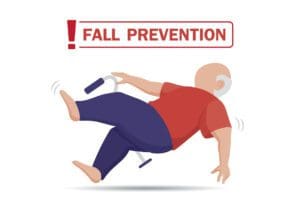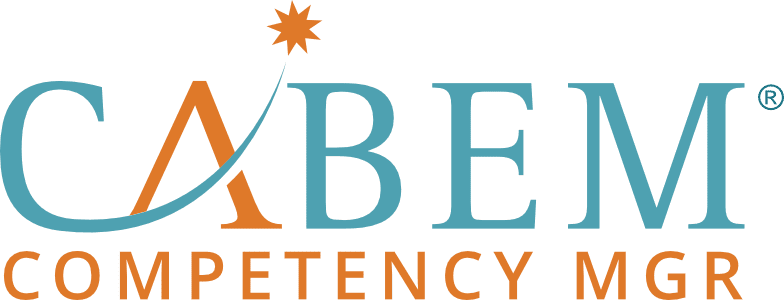Addressing Fall Prevention and Promoting a Safe Senior Living Environment
In senior living facilities, the safety and well-being of residents are paramount. One of the most significant challenges faced in these environments is fall prevention. Falls can lead to serious injuries, decreased mobility, and a decline in overall quality of life for residents. Falls among seniors are a prevalent concern, with statistics indicating that one in four older adults experiences a fall each year. In senior living facilities, where residents may have varying levels of mobility and independence, the risk of falls is particularly high. Factors such as physical frailty, medication side effects, and environmental hazards contribute to this risk, underscoring the importance of proactive measures to prevent falls.
Fall prevention in senior living facilities is not merely a best practice but a regulatory obligation to ensure the safety and well-being of residents. To uphold these standards effectively, senior living facilities must implement robust competency management strategies. Competency management plays a crucial role in addressing this issue effectively, ensuring staff are equipped with the knowledge and skills needed to prevent falls and promote a safe environment for seniors. Let’s delve into the fall prevention standards that exist for these facilities, which can be monitored through competency management.
Regulatory Standards for Fall Prevention
Regulatory standards for fall prevention in senior living facilities are put in place to ensure the safety and well-being of residents. Here are some of the key regulatory standards commonly enforced:
Centers for Medicare & Medicaid Services (CMS) Regulations:
- CMS regulations require senior living facilities, particularly nursing homes and skilled nursing facilities, to conduct comprehensive fall risk assessments for all residents upon admission and regularly thereafter.
- Facilities must develop individualized care plans based on the results of fall risk assessments, outlining specific interventions to prevent falls for each resident.
- CMS also mandates that facilities provide staff training on fall prevention strategies and techniques, as well as on how to respond appropriately in the event of a fall.
Occupational Safety and Health Administration (OSHA) Standards:
- OSHA standards apply to workplace safety in senior living facilities, requiring employers to maintain a safe environment for both residents and staff.
- OSHA regulations include provisions for identifying and mitigating fall hazards, such as maintaining clear walkways, securing handrails, and ensuring proper lighting.
- Facilities must also provide staff with appropriate personal protective equipment (PPE) and training on safe work practices to reduce the risk of falls among staff members.
National Patient Safety Goals (NPSGs) by The Joint Commission:
- The Joint Commission sets forth NPSGs to improve patient safety and quality of care in healthcare organizations, including senior living facilities.
- NPSGs related to fall prevention often include requirements for conducting fall risk assessments, implementing interventions to prevent falls, and educating staff on fall prevention strategies.
- Facilities accredited by The Joint Commission must demonstrate compliance with these NPSGs through regular audits and inspections.
State Licensing Regulations:
- State licensing agencies establish regulations specific to senior living facilities within their jurisdiction, which often include requirements for fall prevention.
- These regulations may vary from state to state but generally align with federal standards set by CMS, OSHA, and other regulatory bodies.
- State licensing agencies conduct regular inspections of senior living facilities to ensure compliance with these regulations, including those related to fall prevention.
Industry Best Practices and Guidelines:
- In addition to regulatory standards, senior living facilities may also adhere to industry best practices and guidelines established by organizations such as the American Health Care Association (AHCA) and LeadingAge.
- These organizations provide resources, training programs, and recommendations for fall prevention strategies based on evidence-based practices and research findings.
- While not enforceable regulations, adherence to industry best practices can demonstrate a facility’s commitment to providing high-quality care and minimizing fall risks for residents.
Compliance with these regulatory standards is essential for senior living facilities to ensure the safety and well-being of their residents and to maintain accreditation, licensing, and eligibility for reimbursement from Medicare and Medicaid programs. Facilities must implement robust fall prevention programs and competency management strategies to meet these standards effectively.

5 Key Components of Competency Management in Fall Prevention
Competency management encompasses the processes and strategies used to assess, develop, and maintain the skills and knowledge of staff members within an organization. In the context of senior living facilities, effective competency management is essential for ensuring that staff are well-trained in fall prevention protocols and equipped to respond appropriately to resident needs. Here are 5 key components of competency management in fall prevention.
- Training Programs: Comprehensive training programs are fundamental to competency management initiatives. Staff members should receive training on identifying fall risks, implementing preventive measures, assisting residents with mobility, and responding to fall incidents. Training should be ongoing to reinforce skills and knowledge.
- Assessment and Certification: Competency assessments can help identify areas where staff may need additional support or training. Certification programs specific to fall prevention can also be beneficial, providing staff with recognized credentials and ensuring a standard level of expertise across the facility.
- Continuous Education: Given the evolving nature of best practices in fall prevention, continuous education is essential. Staff members should stay informed about new strategies, technologies, and research findings related to fall prevention to enhance their effectiveness in mitigating risks
- Collaborative Approach: Competency management efforts should involve collaboration among various stakeholders within the senior living facility, including administrators, healthcare professionals, caregivers, and residents themselves. By fostering a collaborative environment, facilities can leverage collective expertise and insights to implement comprehensive fall prevention strategies.
- Incorporate Evidence based practices: Identify key factors and interventions that have proven effectiveness in reducing fall risks. Consider integrating these research studies, guidelines, and industry recommendations as part of your organizations competency framework.
The Impact of Competency Management on Fall Prevention
Effective competency management in fall prevention can yield numerous benefits for senior living facilities and their residents:
- Reduced Incidence of Falls: Well-trained staff members are better equipped to identify and address fall risks, resulting in fewer incidents and a safer environment for residents.
- Improved Resident Outcomes: By implementing proactive measures to prevent falls, facilities can help residents maintain their independence, mobility, and overall quality of life.
- Enhanced Staff Confidence: Competent staff members feel more confident in their abilities to address fall prevention effectively, leading to higher job satisfaction and morale.
- Regulatory Compliance: Compliance with regulatory standards related to resident safety and quality of care is essential for senior living facilities. Competency management initiatives demonstrate a commitment to meeting and exceeding these standards.
Competency management plays a vital role in fall prevention efforts within senior living facilities. By investing in comprehensive training programs, ongoing education, and collaborative approaches, facilities can empower staff members to mitigate fall risks effectively and enhance the safety and well-being of residents. As the aging population continues to grow, prioritizing competency management in fall prevention is not only a prudent strategy but also a compassionate commitment to ensuring that seniors can age with dignity and security in their chosen living environments.
CABEM Technologies offers competency solutions for the Manufacturing, Healthcare, Education, Government, Financial Services industries, and more.
Everyone faces numerous tasks they must complete, alongside the imperative of acquiring the necessary skills to carry them out effectively. Our system, Competency Manager, serves as a bridge, facilitating the consolidation and cultivation of competencies in a systematic manner, thereby institutionalizing the collective knowledge of enterprise employees.
We’ve observed that numerous training plans operate in isolation, lacking a top-down approach that addresses the holistic needs of the organization. Our system empowers organizations to establish competencies and align them with various segments such as departments, roles, locations, and more, across the entire enterprise. Contact us today to get started.

